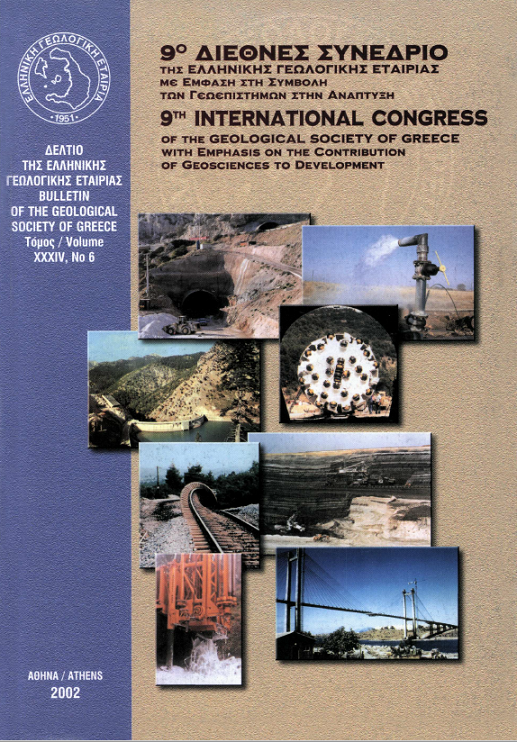MAGMATIC EMPLACEMENT OF OPHIOLITES IN NORTHERN GREECE
Abstract
Most of the folded mountain ranges of our planet include masses of ophiolites. In accordance with the today 's predominant theory this is explained by obduction of ocean floor masses. Since 1956 Professor Brunn formulated the theory of undersea extrusion of mantel material. Our recent research in the areas of Vourinos, Vermion and Pindos have lead us to the conclusion that: The ophiolites are in normal, no tectonic contact with their supporting layers. This contact shows a typical thermal transformation with layers of homstein, amphibolites and granatites.
The directly beneath underlaying series shows progressive and clear evolution from a carbonate platform into a subsea environment with increasing volcanic influences including pillow lava flows. As a conclusion of these observations we can state that we should not automatically interprete ophiolitic findings of the folded ranges to obduction of oceanic floor material. Probably an early compression of the future orogenic areas leads to the creation of rifts with obligue direction to the main axe of compression. Through these rifts hot ultrabasic magma flowed over the sea floor which crystalises in a differencial process.
Article Details
- How to Cite
-
Brunn, J. H., Argyriadis, I., & Braud, J. (2004). MAGMATIC EMPLACEMENT OF OPHIOLITES IN NORTHERN GREECE. Bulletin of the Geological Society of Greece, 36(4), 1618–1625. https://doi.org/10.12681/bgsg.16565
- Section
- Tectonics and Geodynamics

This work is licensed under a Creative Commons Attribution-NonCommercial 4.0 International License.
Authors who publish with this journal agree to the following terms:
Authors retain copyright and grant the journal right of first publication with the work simultaneously licensed under a Creative Commons Attribution Non-Commercial License that allows others to share the work with an acknowledgement of the work's authorship and initial publication in this journal.
Authors are able to enter into separate, additional contractual arrangements for the non-exclusive distribution of the journal's published version of the work (e.g. post it to an institutional repository or publish it in a book), with an acknowledgement of its initial publication in this journal. Authors are permitted and encouraged to post their work online (preferably in institutional repositories or on their website) prior to and during the submission process, as it can lead to productive exchanges, as well as earlier and greater citation of published work.





